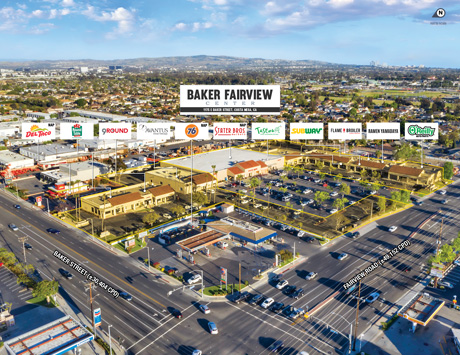By John R. Read, Senior Vice President, CBRE National Retail Partners-West
It’s critical to go back to the basics in times of ever-increasing uncertainty. It is not new news that we are currently seeing inflation at a 40-year high, significantly higher interest rates and weaker economic growth expectations, including more talks of a pending recession, which is driving uncertainty in the U.S. market. These factors require us to consider a market’s fundamentals. For attractive fundamentals, look no further than Orange County’s retail market.
Orange County’s unemployment rate was 2.7 percent in April 2022, down from a revised 3.1 percent in March 2022, and below the year-ago estimate of 6.8 percent. With California’s unadjusted unemployment rate at 3.8 percent and the nation at 3.3 percent (for the same period), Orange County outperformed both metrics.
The county’s leisure and hospitality sector added 6,200 jobs, with 74 percent of these added between March and April of 2022, the most job additions of any sector. Food services and drinking establishments provided most of the employment increase in the subsector, with 4,000 more jobs. Arts, entertainment and recreation also added 1,600 jobs. Orange County boasts about 1,246 arts, entertainment and recreation destinations, along with 7,993 accommodations and food services destinations, making these sectors a critical component to its economy. Many of these services have a direct or ancillary correlation to a variety of retail, further supporting the strength of Orange County’s retail market. In fact, the retail industry employs one in 10 Orange County residents.
Despite the short- and long-term impacts on retail, such as the recent economic effects of the pandemic and the ongoing competition from ecommerce, demand for Orange County retail remains steady. The average asking lease rate in Orange County at the end of the first quarter increased 3.9 percent year over year to $2.93 per square foot, per month. This was 12.7 percent above the pre-pandemic asking rate in first-quarter 2020.
At 4.7 percent, the vacancy rate decreased 10 basis points year over year, and remained unchanged quarter over quarter. Net absorption was a negative 30,583 square feet in quarter one due to a few store closures. More leasing activity is expected, however, due to a flurry of recent deals, along with continued strong demand from retailers who want to take advantage of Orange County’s fundamentals. Recent leases include Amazon Fresh in Laguna Hills, H Mart in Westminster, Island Pacific Supermarket in Lake Forest, Sprouts Farmers Market in Garden Grove, Target in Costa Mesa and Huntington Beach, At Home in Costa Mesa, Bass Pro Shops in Irvine, and 99 Ranch in Aliso Viejo and Tustin.
New construction activity for larger-scale retail developments remains limited. Some redevelopments are pointing to the highest and best use, which may not involve retail. With increasing tenant demand in an already supply constrained market, these trends should benefit existing retail property inventory.
Our National Retail Partners-West team has been fortunate to participate in some of this sales activity, selling 17 retail properties in Orange County in 2021 and 2022. This consisted of anchored and unanchored strip centers, in addition to single-tenant net leased assets. Examples include Katella Gateway in Garden Grove for $33.5 million at a 5.82 percent cap rate and Baker Fairview Center in Costa Mesa for $21.2 million at a 5.26 percent cap rate. On the single-tenant side, sales include Home Depot in Anaheim Hills for $53 million at a 4.58 percent cap rate and Starbucks in Fullerton for more than $3.8 million at a 3.45 percent cap rate. Our most recent unanchored retail strip center sale in June of this year was Foothill Plaza in Foothill Ranch for $10.3 million at a 5.04 percent cap rate.
Orange County has always been a target market for active retail investors and tenants. That likely increased in the wake of the pandemic as a result of the county’s fewer restrictions compared to neighboring Los Angeles County.
No one has the crystal ball of where inflation, interest rates, and the economy will be in the short- and long-term future. However, if you want to choose a market that will continue to be resilient and driven by its underlying fundamentals, Orange County should be near the top of that list.


